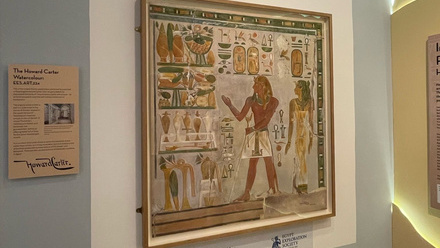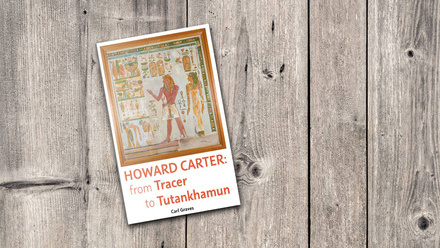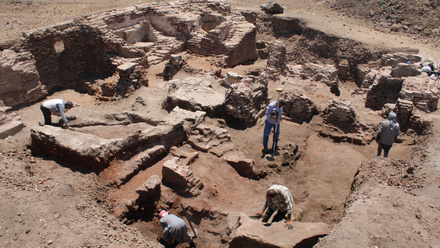Tents and tombs: Accommodating archaeologists
By Carl Graves
Working on an archaeological mission in Egypt or Sudan is a dream for many people and the archives kept at the Egypt Exploration Society provide an opportunity to discover more about living conditions on site at one of their historic archaeological missions. Where quote marks are used in the captions provided below, these are the original captions preserved in the archive and written often by the creators. I have provided them in their original format. The archival references are given in brackets. Below is an introduction to dig houses, what they represent and how they are shown in the archives of the EES. Further Collection Highlights will explore the histories of individual dig houses, the sites and archaeologists they served.
The accommodation used by archaeologists – often referred to as a ‘dig house’ - has taken many forms, from ancient tombs, to tents, mudbrick houses, boats, and in some cases (though not for the EES) huge villas and palaces. Each one becomes a home from home for those sent to the missions, and in many ways reflect the cultural (and often colonial) norms of the time. These headquarters often became, and still become, cultural markers in the landscape and are often termed things like the British, American, German, Dutch, Swiss, or French House. Some are not traditional dig houses, but nonetheless betray international identity, the most obvious is perhaps ‘Chicago House’.
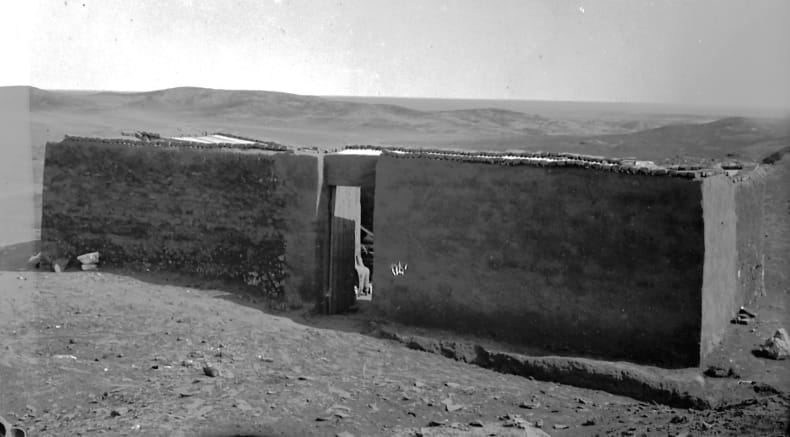
‘Fund house’, San el-Hagar / Tanis 1884 (DE.NEG.138)
The earliest documented dig house of the Society was that of William Matthew Flinders Petrie at San el-Hagar, or Tanis. On 4 February 1884 Petrie arrived at the site during a ferocious rainstorm. He struggled with a tent and built a temporary wooden shelter. During his first week he had some corrugated iron delivered via Suez to form a rain proof roof before beginning work on the construction of his dig house building.
He constructed his house over part of the mudbrick enclosure wall of the temple at Tanis. This provided solid foundations for several rooms surrounding a courtyard. You can see the foundations and corrugated iron clearly in the archival image. Petrie described the house as follows:
“The dining-hall, or the sitting-room, as I have modestly called it, might perhaps be stigmatised by cynics as kitchen, scullery and bathroom all in one. The first thing you see on entering is a telescope lying on a couple of nails over the windows ready drawn out; with this I continually watch how things are going on down in the workings whilst I am up at breakfast. I only now wish for a telescopic voice to hit the offenders. Along the walls are sundry boxes, and piles of biscuit tins, and behind the door on a box is a paraffin stove. My easy chair is a box which contains tins of paraffin, and here again I claim an advantage over stereotyped civilisation; whoever had a chair which they could vary to two or three different heights according as they may want to sit up in dignity, to put out a platter on their knees, or to work on the floor? Yet all these benefits I have just by turning my seat over. The next room I intend for my bedroom and for photografia and other matters, but at present I sleep in the end room… After a month of reposing on a deal box I fear that I shall become quite self-indulgent now that I enjoy the softness of a sand floor on which to lay my pile of blankets.”
Some missions didn’t even enjoy the luxury of a fixed abode, some travelled as they produced surveys of large areas. This example shows tents pitched alongside the Birket Qarun in the Faiyum during a survey by the Graeco-Roman Branch in 1900-01.
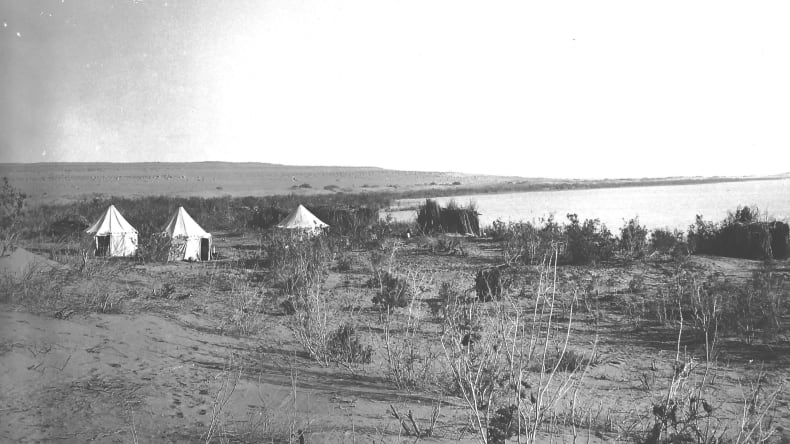
An ‘excavator’s camp’ with a view during the Graeco-Roman Branch survey in the Faiyum 1900-01 (GR.NEG.105)
As well as providing accommodation, these dig houses provided space to work and relax for the teams living in them. This image shows the pith helmets and fly whisks of the archaeologists while a recently excavated inscription from the temple of Amara West sits on the table in the background near to some conservation materials.
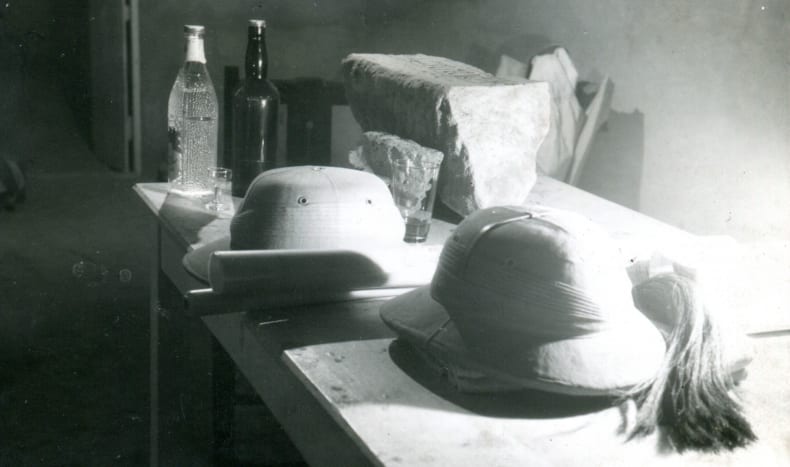
Pith helmets and fly-whisk downed after a day on site, at the Amara West dig house during the 1937-38 dig season (AW.PICT.MISC.074)
Selected EES dig houses
Beni Hasan (coming soon)
Abydos (information by Susan Biddle's work at the Griffith Institute)
The House of Ali Suefi at Armant
Amarna (coming soon)
Meir (coming soon)
Caminos' camp at Silsila in 1959
Buhen: A dig house becomes a home
Further reading
The subject of dig houses, their inclusion and exclusion of different groups remains an important subject of study. You may be interested in the following selected further reading:
Carruthers, W. 2019. ‘Credibility, civility, and the archaeological dig house in mid-1950’s Egypt’, Journal of Social Archaeology 19:2, 255-276.
Spencer, P. 2014. ‘Preparing for an Excavation: the 1909-10 EES season at Abydos’, in A. Dodson et al. (eds) A Good Scribe and an Exceedingly Wise Man: Studies in Honour of W. J. Tait, Golden House Publications: London, 279-290
How can you support work in our collections?
If you would like to support the Society’s Collections, then please consider donating here. Funds generated will go directly to providing conservation and care, and improving access to our collections and will be kept in a restricted fund for this purpose.

